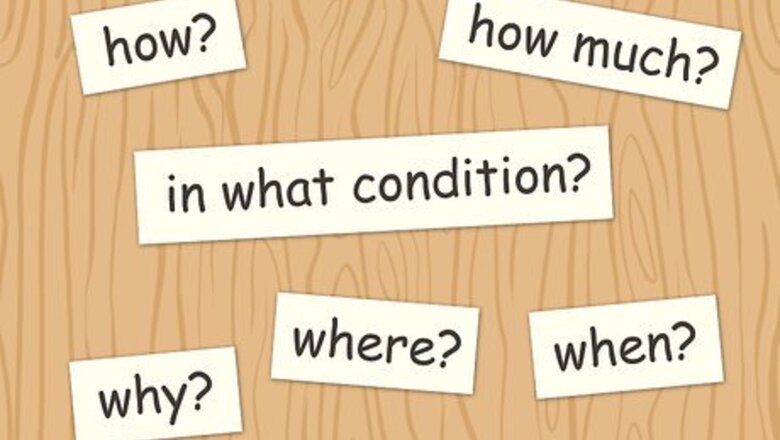
views
X
Research source
Going Over the Basic Characteristics of Adverbs
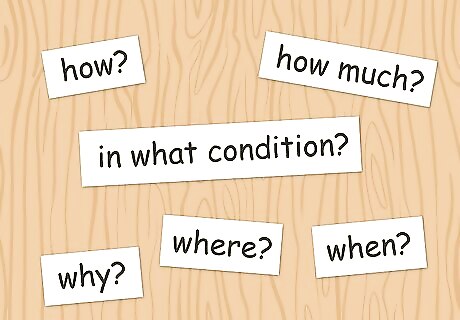
Identify all of the possible questions that adverbs can answer. Adverbs are added to sentences in order to provide an additional level of clarity or detail. When you are teaching students, remind them of the importance of adverbs by listing out the questions that they can respond to. Ask your students to offer suggestions and write them on the board. For example, adverbs can address the questions of, “How? How much? In what condition? When? Where? Why?” At this time, you may also want to have students ask, “Does the word end in –ly?” This is an easy way for younger students to identify adverbs.
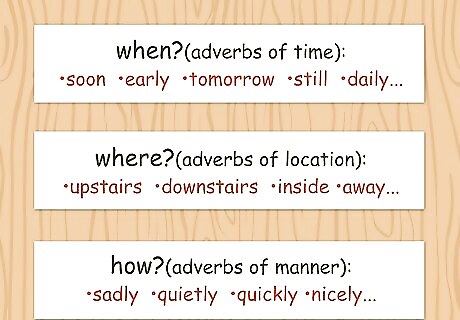
List out all of the adverb categories. It’s important for students to know that there are a few specific categories that different adverbs fall into. Explain to your students that learning about categories of adverbs will make them easier to identify and modify. Discuss how there are adverbs that provide descriptions of time, location, and the manner of events or actions. For example, adverbs of time include answers to questions regarding frequency and timing. Soon, early, and tomorrow are adverbs of time. Adverbs of location help to answer the question of, “Where?” Upstairs, downstairs, and inside are all adverbs of location. Adverbs of manner help to answer the question of, “How?” Sadly, quietly, and quickly are all adverbs of manner.
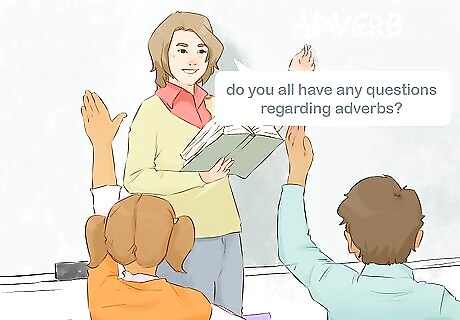
Ask your students what questions they have about adverbs. After you’ve provided a general explanation of what adverbs are and what categories they can belong to, open the floor to any student questions about sentence construction and adverbs. Give yourself plenty of teaching time for this conversation, as it might take several minutes. Expect younger students to have fewer questions. They’ll likely require more instruction on the basics of sentence construction as well.
Mastering Adverbs Using Classroom Exercises

Create a noun/action manner list with your students. Together as a class, come up with a list of at least 10 simple nouns paired with verbs representing a possible action. Then, ask your students to create possible sentences using the noun/verb pairings along with an adverb. Write these sentence options up on the board for all to see. For example, for a pairing of rabbit/hop, a sentence might look like, “A rabbit hops hurriedly.” This is an exercise that is suitable for all levels. For beginner students, start out the list with a few examples that they can mirror. You should get a number of different sentence suggestions for each pairing. That is part of the exercise. It shows how adverbs of manner can define a sentence. For example, for a pairing of dog/bark, a sentence might look like, “A dog barks loudly.” Or, “A dog barks excitedly.”
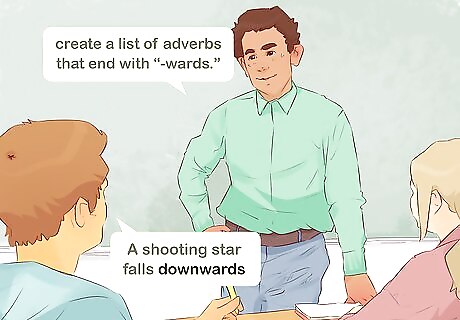
Work on adverbs of place via sentence construction. Ask your students to create a list of adverbs that end with “-wards.” Then, get them to construct sentences using this directional adverbs and write these up on the board. It’s helpful if you have students create sentences that show actions that follow these adverbs and those that do not work with these adverbs. For example, a student might say, “A shooting star falls downwards.” If a student tries to use the word “towards,” you’ll need to explain that that is a preposition. Because this exercise requires a wide-ranging vocabulary, it is better suited for moderate- or advanced-level students.

Practice time adverbs by asking “How long?” Go from student to student asking each of them a question starting with, “How long…?” One of the rules of this game is that each student must answer this question starting with the adverb of time “for.” Then, they state a particular length of time. To mix it up, ask questions from both the past and present. For example, you might ask, “How long have you been in school?” Your students could answer, “For 5 years.” This is great exercise for beginner students, as it eases them into an understanding of adverb importance.
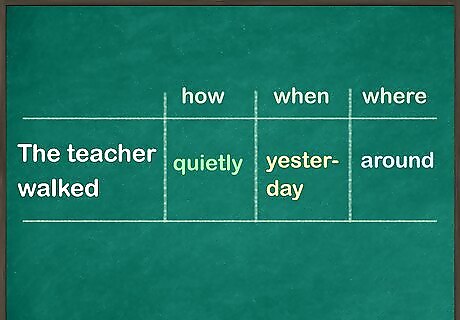
Play a walk-around adverb game. Start at one corner of your classroom and slowly walk around the room. Ask your students to be quiet during this time. Then, go to the board and write, “The teacher walked,” in large letters. Ask your students to tell you how, when, and where you walked. Record their responses on the board. Go through and circle the adverbs. They’ll find that they just provided a number of adverbs very quickly. All levels of students can benefit from this teaching exercise.
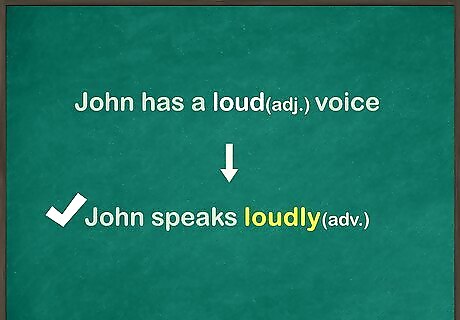
Ask students to transform adjectives into adverbs. Get your students to come up with a list of adjectives. Then, work your way down the list as a class. Look for adverbs that can be transformed into adverbs by adding “-ly” on to the end. For example, your students might transform the word “loud” into “loudly.”
Practicing Adverb Usage in Pairs

Complete a correction-based exercise. Students like this learning approach because it allows them to approach grammar like it is a game. Divide your students into pairs. The first student makes a false statement including an adverb. Then, the second student uses the same sentence, but replaces the adverb with one of their own. It’s important that the initial statement is false or inaccurate because this allows the student’s partner to play the part of teacher and offer a correction. An example pairing might be a first sentence of, “The dog barks quietly.” The corrected sentence might be, “The dog barks loudly.” Don’t just stick to 2 rounds of this exercise. The students should go back and forth with the same sentence multiple times. Advanced students, in particular, can usually keep this game going for up to 30 minutes. For example, the first student might say, “The athlete moves inelegantly.” The second student might alter it to, “The athlete moves quickly.”
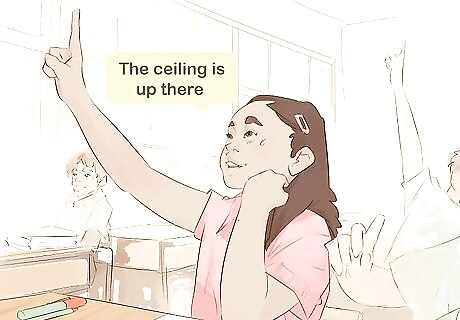
Practice adverbs of place with a spatial exercise. Pair your students up and have them walk around the classroom together. They should take turns stating sentences that include “here” and “there” paired along with common prepositions, such as “down.” Ask your students to only use “here” for something relatively close by and “there” for an item farther away. Other prepositions that your students can use, include up, over, under, and through. For example, a student might state,” The ceiling is up there.” Or, “my desk is over there.” This is a fun exercise for all levels of students, as it gets them connecting adverbs to their environment.
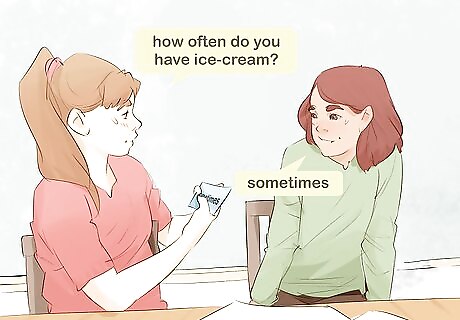
Do a card game to teach students frequency adverbs. Give each student pair a pack of notecards with a single frequency adverb written on each one. Instruct them to ask each other questions where frequency adverbs are the answers. A student has to give up their card if they are asked a question with that adverb as the answer. Some common adverbs of frequency are: sometimes, rarely, almost never, hardly ever, always, and usually. This is an exercise more effective for advanced students, due to the complex nuances between the various adverbs.















Comments
0 comment